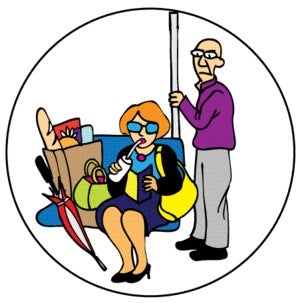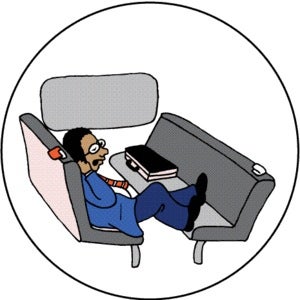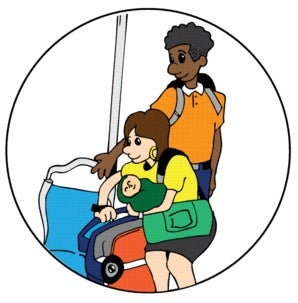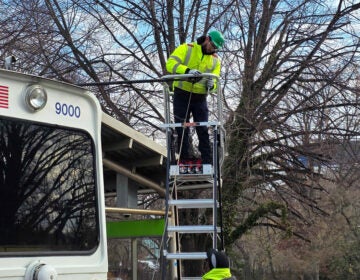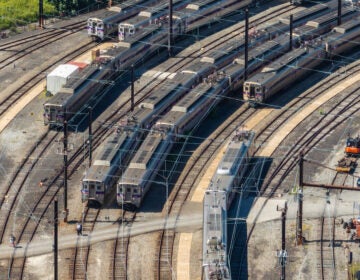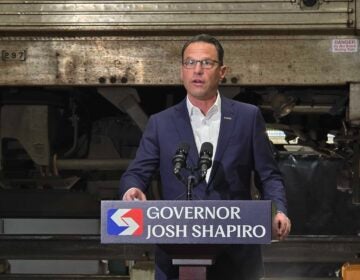SEPTA tackling difficult job of serving people
Sept.13
By Anthony Campisi
For PlanPhilly
Kim Scott Heinle faced a dilemma.
To protest a cut in child care services, a neighborhood group had decided to stand in the trolley tracks along Girard Avenue, stopping the Route 15 trolley until police could come to clear them off the road.
SEPTA has nothing to do with providing child care to that neighborhood, but gumming up service “gets attention,” Heinle explained. Commuters get angry. Newspapers and television stations take notice.
Should the authority explain to riders that protesters, not SEPTA, are responsible for the delay? That nothing can be done until police clear the tracks?
“They don’t want to hear that,” Heinle said. When commuters can’t get home from work, they’re not going to be blaming protesters — they’ll be blaming SEPTA.
For a system that averages about 20 incidents that affect service a day — from protests, to bomb scares, to car crashes — calibrating SEPTA’s response is a full-time job.
And that’s what Heinle does. Named SEPTA’s first assistant general manager for customer service last year after serving the authority in various capacities since 1984, Heinle is spearheading the authority’s effort to shake its poor public image.
Heinle sat down with PlanPhilly to discuss some new initiatives the authority is rolling out and the new, rider-friendly philosophy SEPTA is trying to adopt to replace a public-utility mentality that plagued the authority with poor responsiveness for years.
One fundamental principle he stresses is the authority’s need to accept responsibility for problems — even when they’re not its fault.
When protesters block Girard Avenue, conductors and drivers need to apologize and try to defuse the situation with humor, Heinle said.
“At some point you don’t try to explain all the technical details,” he said. Even if a problem on Amtrak is causing a delay for regional rail riders — and there’s nothing SEPTA can do about it — Amtrak “can’t be the fall guy.”
At the same time, riders now expect more information about SEPTA delays than they did in the past. That’s why the authority is planning on rolling out a Web-based service that will provide real-time bus information to riders on their BlackBerries or iPhones.
At the same time, Heinle said that he was aware of the limitations of the Internet and stressed the importance of improving contacts between SEPTA employees and riders. While some people may check the SEPTA website before leaving for the bus stop, most don’t, and they expect bus drivers to be courteous and helpful in answering their questions.
And when SEPTA employees don’t know the reasons for a delay, Heinle said they should be honest about it. If a red light on the tracks is keeping a train from moving, sometimes the only thing to do is to say “as soon as I know, you’ll know,” he said, letting riders know that SEPTA is aware that a problem is exists.
Heinle is working behind the scenes to train employees on such customer interactions. Though almost every bus and trolley operator receives instruction on customer service every six years, he’s working to make sure they get training every five years and to expand training to other SEPTA employees — like maintenance workers and station managers — who also interact with riders.
He’s also stressing in-field, peer-to-peer coaching, where employees can be taught on the job and also observe other employees who are particularly good at putting their best foot forward.
“Everybody has a bad day,” he said. “You have to figure out a way to suck it up.”
As part of his interpersonal focus, SEPTA has expanded its Customer Connection program from train stations to large public areas like the Philadelphia Zoo. The goal is to allow riders to ask questions and vent their frustrations, as well as to reach out to Philadelphians who don’t take transit and provide them with information about SEPTA.
The authority is also opening a customer-service booth at the headhouse to the 30th Street El and trolley station because of the number of out-of-towners who pass through on their way to and from the nearby Amtrak station.
At the same time, Heinle is also turning to riders for ideas. The SEPTA website now features surveys designed to get readers’ reactions to new ideas and solicit them for advice on developing new programs. Most surveys get between 500 and 1,000 responses on topics ranging from renaming the regional rail system to improving parking around stations.
The Quiet Car program was the first major project that came out of that process — riders saw an Amtrak quiet ride policy and suggested that SEPTA adopt something similar. General manager Joe Casey threw his support behind it, and after a testing period on rush hour trains serving the R5 to Landsdale, “customers throughout the whole system were chomping at the bit” to get it on their lines, Heinle said.
Customer surveys — the results of which Heinle keeps in an oversized black binder near his desk — suggest that about 85 percent of customers are happy with the program, with complaints mostly coming from enforcement of the program on specific trains, he said.
Infrequent riders don’t always know what the Quiet Car program is. At the same time, conductors have to be aware of “quiet ride vigilantes” who make more noise enforcing the rules than the rule breakers make, he said.
SEPTA is also rolling out a passenger etiquette program, aimed at addressing quality-of-life issues on the system. Every month, new signs will be put up at stations and in SEPTA vehicles, reminding customers to do things like yield their seats to the elderly and to take their trash with them when leaving the bus.
Though Heinle doesn’t think that signs will stop everyone, the program “at least plants a bug in people’s mind,” he said.
SEPTA police will also begin enforcing quality-of-life rules that cause other riders irritation but are often ignored by the authority. If riders see that police the no-smoking rule on subway platforms, the thinking goes, then they’ll be less likely to do it themselves.
And in a change from a time when the authority often ignored outside input into its programs, the authority ended up altering the passenger etiquette program and its policies on eating on SEPTA vehicles after consultations with rider groups.
Though the rule, largely unenforced, had been that no food or drinks were allowed on SEPTA vehicles, the authority is now permitting drinks secured with lids and is also allowing regional rail passengers to bring some foods on trains with them after hearing from groups like the Delaware Valley Association of Rail Passengers, an advocacy group, that many regional rail riders need to eat meals on the train.
Though Heinle said that a large container of fried chicken or an ice cream cone in hot weather won’t be allowed, morning muffins are OK.
SEPTA is also getting ready to unveil a new project to improve signage for Center City transit stops. The green “T” (http://changingskyline.blogspot.com/2008/11/green-light-for-transit.html — that was placed on top of SEPTA transit stops least year is being replaced. Though there’s no money yet allocated for it, there are plans to unify the colors and names on signs throughout the underground concourses leading to Suburban Station and City Hall.
Heinle is also considering a visitor-service program, where the authority will send out people — maybe retirees looking for some work — to introduce themselves and give advice about getting around the city.
And the authority is moving closer to a decision about redoing the regional rail numbering system — another idea that Heinle got from rider suggestions. He’s concerned that SEPTA isn’t “doing enough to nurture … the newbie” rider, and the current system causes confusion for riders who don’t realize that lines loop through Center City and have two terminals.
Though none of the changes SEPTA is contemplating will be met with unanimous praise, Heinle is convinced that agency is making significant steps when it comes to changing Philadelphians’ attitude about their transit system.
“We’re trying,” he said. “There’s a new SEPTA.”
Contact the reporter at campisi.Anthony@gmail.com
<!–[endif]–>
WHYY is your source for fact-based, in-depth journalism and information. As a nonprofit organization, we rely on financial support from readers like you. Please give today.



